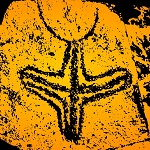 Imaoun-1 is one of the most important rock art sites in southern Morocco. In this study I briefly describe the array of petroglyphs at this site, comprising cupules, abstract motifs and patterns and biomorphic images. Imaoun-1 is also special because of its overrepresentation of abstract imagery. In this study I focus on one specific abstract petroglyph (said to have megalithic connotations), and – in more detail – on the Venus Cross, a globally widespread motif that is also overrepresented in this small part of Morocco. Its possible origin and journey across the prehistoric landscapes are also discussed.
Imaoun-1 is one of the most important rock art sites in southern Morocco. In this study I briefly describe the array of petroglyphs at this site, comprising cupules, abstract motifs and patterns and biomorphic images. Imaoun-1 is also special because of its overrepresentation of abstract imagery. In this study I focus on one specific abstract petroglyph (said to have megalithic connotations), and – in more detail – on the Venus Cross, a globally widespread motif that is also overrepresented in this small part of Morocco. Its possible origin and journey across the prehistoric landscapes are also discussed.
By Maarten van Hoek.
*
*
Imaoun – Morocco
*
Cross-Examining the Venus Cross
in the Rock Art of Morocco and Beyond
*
Maarten van Hoek
TRACCE – 2024
*
Introduction
Imaoun-1 is – in my opinion – the most important petroglyph site in the drainage of the Wadi Akka and probably in the whole of the Anti-Atlas as well. In this study the Anti-Atlas covers the mountainous and desert areas bordered in the north by the High Atlas and by the River Draa in the south; roughly the area between sites 6 and 9 in Figure 34. Its significance is not only due to its enormous quantity of petroglyphs, but also and especially because of the many exceptional abstract patterns and motifs.
According to André Simoneau the site was (first?) discovered in 1972 (Simoneau 1977: Planche 66). He did not explicitly mention the name of the explorer, but it definitely was Simoneau who was the first scholar to survey the site scientifically. Moreover, he was also the first to report Imaoun-1 to the scientific world (1977). After the publication of his 1977-paper, several researchers surveyed the site and published useful additional information about the exceptional petroglyphs at Imaoun-1 (for instance Searight 2001; Dupuy and Searight 2005; Searight-Martinet 2015; Heckendorf 2008; Gauthier and Gauthier 2015; Van Hoek 2019a). In the course of time, several other rock art sites have been recorded in the area (for instance Hermann 2018, 2019; Rodrigue et al. 2016; Heckendorf 2008), altogether making up the Imaoun Rock Art Complex. This study focusses on some specific rock art motifs, found at Imaoun-1 and 3.
However, despite all those investigations up to now (2024) there has never been compiled a complete scientific inventory of Imaoun-1 (nor of Imaoun-3). There are several legitimate reasons for this. First of all, Imaoun-1 is literally littered with uncountable boulders of different sizes and many outcrop panels. Although most of the panels available do not have petroglyphs, there are still numerous boulders and outcrops with one or more decorated panels. Numerous often multi-facetted outcrops are found on the flat plateau (about 750 m in length from north to south), on the steep north- and west-facing cliffs, while there are several (fallen) boulders below those cliffs. On top of that, many petroglyphs are weathered so much that they are hardly discernible. Often there are notable differences in patination, ranging from almost invisible to exceptionally clear (Figure 1). Finally, several petroglyphs may well be invisible, being covered by the desert sands, especially at the foot of the west-facing cliffs.
Figure 1. Boulder with petroglyphs at Imaoun-1. Photograph © by Maarten van Hoek.
Click on any illustration to see an enlargement.
*
Furthermore, at any time of a sunny day (which is almost standard in this desert area) many panels are in the shade (and thus [almost] invisible), while others receive perpendicular sunlight (enhancing the stark contrast between dark and light panels) and also are hard to see, especially when the smooth rock surface reflects sunlight, rendering faint images invisible. One is lucky to have perfect, slanting sunlight to see the petroglyphs. But slanting sunlight never illuminates all petroglyph panels all at the same time, thus a period of perhaps several weeks of on-site-camping, involving several trained persons systematically investigating all panels with petroglyphs, will be necessary to do the job.
In her most extensive survey of Moroccan rock art Susan Searight (2001; see also 2015) stated that about 740 petroglyphs have been recorded at Imaoun-1. However, I agree with her that this number is only provisional, as she as well emphasises that many images will have escaped being noticed (for reasons mentioned in the preceding paragraph). I did not count the petroglyphs while surveying Imaoun-1 (we were there for only one day!) and neither did I venture to count them at home when scanning my photographic record. Therefore, this study does not at all pretend to offer any kind of inventory, but aims at reviewing some of the most interesting petroglyphs (Part1), while Part 2 will attempt to link images recorded at Imaoun-1 with other rock art sites all over the world (without claiming that all relevant associated rock art sites will be discussed and without claiming that the links suggested by me prove anything).
*
Location
Imaoun-1 is a low, long outcrop ridge topped by a slightly eastwards sloping plateau. The site is located in the extensive Feija (plain) of Imaoun, just south and east of the Anti-Atlas, about 24 km NNW of the village of Akka and 18 km NNW of the gap in the long mountain ridge of Jebel Bani (see Figures 34 and 35). Despite being known for a long time, there still is some confusion about where exactly Imaoun-1 is located.
In view of the importance of Imaoun-1 it is remarkable to notice that the very extensive, most detailed, yet extremely puzzling (hard-to-read) survey of the rock art in a large area around Icht and Akka by Renate Heckendorf (2008) does not seem to include any information about Imaoun-1; an – in my opinion – truly exceptional and unique rock art site in (southern) Morocco. After a long and frustrating search through her 2008-thesis, I finally found out that Imaoun-1 was confusingly listed by Heckendorf as “TM2/04: Imaoun Assif Touna” (or just “Assif Touna” [2008: 147]), without clarifying that her TM2/04 is actually also known as – and consequently reported as such in publications – Imaoun South (Sud) or as Imaoun-1. The red arrow in Figure 2 may indicate the location (and direction?) of the dry riverbed of Assif Touna, which joins a tributary of Wadi Akka at the southern tip of Imaoun-2. In her 2008-thesis Heckendorf also refers to André Simoneau (1977) and to his catalogue number of the site he called “Imaoun Assif Touna”: 15.0109. Five photos with this catalogue number – demonstrably depicting petroglyphs recorded at Imaoun-1 – were published by Simoneau in 1977.
Figure 2. Part of the Imaoun Rock Art Complex, showing the correct locations of Imaoun-1, 2 and 3. The red circle (4) approximately shows the incorrect location of TM2/04: Imaoun Assif Touna according to Heckendorf (2008: Abb. 50. Karte 3). The green circles indicate the sites with Venus Cross petroglyphs. Map © by Maarten van Hoek (scale about 200 m), based on Google Earth.
Much later Susan Searight included Imaoun-1 as “S-32 Assif Touna” in her thesis (2001: 303), repeating Simoneau’s (1977) catalogue number 15.0109 as well. Moreover, in her extensive thesis about the rock art of Morocco Searight (2001) also briefly described the three then known sites of the Imaoun Complex differently. The main site is called Imaoun South by Searight, which is the site referred to in this study as Imaoun-1. Confusingly, in her 2008-thesis Heckendorf labels another site (TM2/07) “Imaoun S.” as well (her “S.” definitely meaning “South”), but her TM2/07 concerns a different site, which is found no less than 5000 m south of Imaoun South (Imaoun-1). Surprisingly, Heckendorf (2008) did not refer to the most informative paper by Searight (1999), which describes and lavishly illustrates Imaoun-1, a site which was then also labelled Imaoun-Sud by Searight (1999: 15; Fig. 1). Only 110 m to the north of Imaoun South (Imaoun-1) and across the narrow, dry river bed of Wadi Akka, is Imaoun North (Imaoun-2), while about 2000 m to the west – again across Wadi Akka – is her Imaoun West (Imaoun-3 or Jorf Naga [Van Hoek 2024; Rodrigue 2024]).
In itself it is not a problem using the name of “Imaoun Assif Touna” (which was actually introduced by Simoneau in 1977), to indicate Imaoun-1, as long as it will be made clear which site it concerns in order to avoid confusion. It is thus the more surprising to see that site TM2/04 – called “Imaoun Assif Touna” by Heckendorf (which thus in fact refers to Imaoun-1) – has completely incorrectly been marked on her map of the Imaoun area (2008: Abb. 50. Karte 3). On her Abb. 50. Karte 3, the site of “TM/04 (Imaoun Assif Touna)” is located by her 1100 to 2000 m NNE of the factual location of rock art site of Imaoun-1 (Figure 2). More unexpected is the fact that the unique site of Imaoun-1 and the rock art sites of Imaoun-3 (reported by Garcin and Garcin in 2004; Van Hoek 2024; my video about Imaoun-3A) and Imaoun-2 have not even been marked on her Abb. 50. Karte 3 (2008).
Concluding, three rock art sites (the yellow and green circles in Figure 2) – all reported before 2008 – are missing on the 2008-map by Heckendorf, while her location of TM/04 (Imaoun-1) is incorrect. Moreover, those three missing sites (Imaoun-1 to 3) have not been described, mentioned or illustrated by her, while it is certain that Imaoun-1 houses one of the most important rock art sites in (southern) Morocco. Any researcher recording the rock art in the Wadi Akka drainage should – in my opinion – at least mention those three important sites in any publication and include some illustrations (of at least Imaoun-1).
Finally, it is confusing that Imaoun-1 is also known by a completely different name. In their paper Skounti et al. (2019: 193) mention the name of “Azrou Iklan” (meaning “tattooed rocks”) when referring to Imaoun-1. Also the caption of their Fig. 8.1 and 8.2 calls Imaoun-1 “Azrou Iklane (Imawoun)”, referring to two boulders with cupules at Imaoun-1 (Van Hoek 2019a: Figs 11 and 12). Also this label is confusing, because much further west is another rock art site called “Azrou Iklan”, which is known for its unusual boat petroglyph. Fortunately, Alain Rodrigue (2024: pers. comm.) was so kind to inform me that the names used by Skounti et al. are in fact right, because Imaoun is the name of the whole region of the different wadis collected in the Feija de Imaoun (the Plain of Imaoun). However, because the name Imaoun is used much more often in publications, I will continue to use the name of Imaoun-1 in this study.
*
Part 1 – Imaoun-1 Images
The imagery recorded at Imaoun-1 can roughly be divided into three groups: “A” abstract motifs and abstract patterns (comprising up to 56% of the grand total of images, according to Searight-Martinet [2015: 60]); “B” biomorphic figures (27% involving domesticated cattle, according to Searight-Martinet [2015: 60]) and “C” man-made objects (not specified as such in the publications by Searight). Recently-made images (including signs of vandalism) will not be discussed (for examples see my video). Earlier Searight (2001: 303) mentioned 414 curvilinear designs, 202 petroglyphs of domestic cattle, as well as 56 non-identified animals, some antelopes, rhinoceros, ostrich and mounted horses of the Libyco-Berber Style (which possibly involve some rare examples of scenes) and one pecked chariot (later Searight-Martinet [2015: 60] mentions three chariots, while Gauthier and Gauthier recorded six petroglyphs of chariots at Imaoun-1 [2015: 6 – 7]). More detailed information about Imaoun-1 has been published by Searight-Martinet (2015). Yet, lacking a complete inventory of Imaoun-1, it will be no surprise that – so far – all publications are incomplete (also mine). For instance, Searight (2001) did not mention any giraffe petroglyph at Imaoun-1 (see Figure 18), neither any petroglyphs depicting weapons (see Figure 26).
*
A: Abstract Petroglyphs
Within the context of the rock art in southern Morocco, Imaoun-1 is exceptional for having a statistical overrepresentation of abstract petroglyphs. But also the display is more than unusual, because many deeply polished abstract patterns and motifs are found on impressive outcrop stacks towering over the vast plain of Imaoun. However, it is important to know that in this study I make a distinction between abstract patterns and abstract motifs, a distinction which will now explain. An abstract motif can more easily be identified and accordingly labelled (like a circle or a spiral) and thus motifs are more often found repeated (at one or more sites). At Imaoun-1 a motif usually is smaller than a pattern (but of course there are rare exceptions). The abstract patterns at Imaoun-1 are (subjectively) randomly arranged, although the nested character – often using closely packed, curvilinear and straight “parallel” grooves – is more than obvious in many petroglyphs. At Imaoun-1 combinations (sets) of nested arcs and (sets) of parallel lines (straight and/or curvilinear) often occur. The complicate things further, abstract motifs (especially concentric circles) are often found mixed with apparently randomly arranged groove-patterns.
*
A1: Abstract Patterns
No attempt will be made to offer statistics regarding the number of abstract patterns, as they are so enormously complex and often so closely packed, that it is impossible to separate those patterns as individual (sets of) petroglyphs. A fine example concerns the decorated panel in Figure 3. Does it show only one petroglyph, or five sets of patterns joined together? Notice that the largest part seems to continue on the other side of the boulder and that possibly an image of a quadruped is involved (“?” in Figure 3).
Figure 3. Boulder at Imaoun-1. Photograph © by Elles van Hoek.
Depending on the sunlight-angle the best and best visible abstract patterns appear on the towering outcrop stacks forming the NW corner of the site (marked with a blue star in Figure 4). Many smooth surfaces (wind-blown?; water-worn?; or anthropically smoothened?) on the very top of those stacks have been densely adorned with complex patterns of parallel lines (straight and undulating), grids and circular or curvilinear patterns. The visibility of those patterns varies with the position of the sun (Figure 5). It seems – but my photographic record is not convincing – that the abstract patterns avoided (at least three possible) petroglyphs of quadrupeds (marked 1 to 3 in Figure 5). It is always possible that the often boldly executed abstract patterns superimpose (and even erase) earlier petroglyphs (see for instance Simoneau 1977: Planche 67: abstracts superimposed upon a bovine).
Figure 4. View of Imaoun-1 (R = Recess). Photograph © by Maarten van Hoek.
Figure 5. The outcrop stacks at the NW corner of Imaoun-1, photographed at different times of the day. Photographs © by Maarten van Hoek.
Indeed, there are some fine examples of superimposition involving abstract and biomorphic images, but (in general) it is often hard to tell which image superimposes which petroglyph. Fine examples are the configuration on a long boulder on the plateau (Figure 6) and the cupules associated with an outlined petroglyph of a bovine on a panel at the northern façade. Earlier I suggested that the quadruped superimposes the cupules (see Figure 8; Van Hoek 2019a: Fig. 17), but scanning the photos again, I am not so sure anymore.
Figure 6. Boulder at Imaoun-1. Photographs © by Maarten van Hoek.
*
The Purported Megalithic Pattern
The most complex abstract pattern at Imaoun-1 (B in Figure 7) is found on an almost vertical rock panel in a shallow alcove at the very northern end of the site. The shelter is located at the foot of the outcrop stacks shown in Figure 5 (a recess, marked “R” in Figure 4). It seems (but we cannot ever be sure) that this complex pattern was intentionally executed inside the shallow alcove. If so, the reason is still enigmatic.
The complex pattern involves a set of centrally placed, vertically arranged, parallel grooves, flanked by complex patterns of nested arches and (at the top section) a group of parallel, horizontally arranged grooves at either side, while the right hand group continues (though with very short lines) into the middle section. The whole pattern is topped by at least one small, centrally placed arc (indicated by an arrow in Figure 7).
Figure 7. The recess (B) at the NW corner of Imaoun-1. Photographs © by Elles and Maarten van Hoek. Drawing © by Maarten van Hoek, based on the drawing by Dupuy and Searight (2005: Fig. 8).
This enigmatic and unique petroglyph (about 60 cm in height) is said by André Simoneau to have been discovered in 1972 (1977: 73). He published a photo on which – unfortunately – the pattern is only faintly recognisable (1977: Plance 66). Importantly, Simoneau spoke of a design of “megalithic allure” (a label to which I shall return when discussing the Imaoun Links in Part 2). This “megalithic” label was repeated by Susan Searight. She published two photos of the panel (1999: Fig. 3 and 4), but she did not further discuss this “megalithic” label. Other abstract “megalithic” patterns at Imaoun-1 (to which I shall return) concern petroglyphs of (nested) curvilinear lines (see Figure 28), (nested) undulating lines (Searight 1999: Fig. 12; see also the small panel below the possibly unique giraffe petroglyph in my Figure 18) and (nested) zigzags (Searight 1999: Figs 26 and 27).
Despite the fact that the correct (graphical) information regarding this unique pattern was and is available, it is most puzzling why a drawing published by Christian Dupuy and Susan Searight (2005: Fig. 8) offers completely incorrect graphical information. Ignoring the fact that several petroglyphs of both panels are missing in the drawings, the misleading information operates on two levels. A: The first level concerns the placement of the two petroglyphs. First of all, their drawing (Figure 7: centre) incorrectly suggests that the complex pattern (B in Figure 7) and the large petroglyph of an outlined bovine (A in Figure 7) are found on one and the same panel, while in fact they appear on two different, clearly separated panels. Moreover, it is also suggested that the abstract pattern is found directly below the petroglyph of the bovine (A in Figure 7). In fact the abstract pattern (B in Figure 7) is found a distance to the right of the bovine-panel. Finally, their drawing suggests that both petroglyphs face into the same direction, while the bovine faces north, and the abstract pattern faces NE (which might be important).
B: The second level concerns their layout of the abstract pattern. Although the differences between their drawing and the factual layout are hard to see, there are several disagreements. Some horizontal, parallel lines at the left-hand side are missing, while the number of vertical, parallel lines is incorrect in all cases. A long, undulating line (also at the left-hand side) continues for a much longer stretch. The number of arcs is not always correct, and – finally – the small arc at the top is missing. Especially this small arc just possibly might provide a link with other, distant petroglyphs, which will be discussed further on.
*
A2: Abstract Motifs
The simplest form of an abstract petroglyph is the cupule; a small hemispherical depression. Surprisingly, Imaoun-1 has an above average number of cupules. While most rock art sites in the Anti-Atlas region of southern Morocco have no cupules or just a few, at Imaoun-1 I counted about 863 cupules (Van Hoek 2019a: Fig. 2), although it must be emphasised here again that several cupules are doubtful, possibly just representing natural depressions (which – nevertheless – may have triggered the manufacture of anthropic cupules).
Altogether the Imaoun Complex (Imaoun-1 to 6; Imaoun-7 is not included in this survey; see Van Hoek 2019a) has no less than 1150 (possible) cupules, which is a remarkably high number, knowing that isolated cupules are rather scarce or absent at other rock art sites in the Anti-Atlas. Even when half of the amount of cupules at the Imaoun Complex would actually be natural depressions, 575 examples still would be an impressive number. This high number might be explained by the fact that the Imaoun cupules are located on an important south-north route (and vice versa) from the Anti-Atlas through the Akka-foum to the River Draa and beyond. Yet, cupules seem to be absent (or simply not – yet – recorded) at the rock art concentrations near the Icht and Foum el Hassan ‘foums’ of the Oued Tamanart further west, which also provide important through routes leading north via the Oued Tamanart (a remote, north-south running valley) where also many rock art sites have been recorded. Therefore, for now the wealth of cupules at the Imaoun Complex is still enigmatic.
Authentic cupules at Imaoun-1 are sometimes intimately associated with biomorphic petroglyphs, like the outlined bovine – manufactured on an almost vertical part of the north facing wall – that seems to have been superimposed by definitely anthropic cupules (Figure 8). However, earlier I stated that the zoomorph was “a horse?” (Van Hoek 2019a: 15), while now I am convinced that it represents a bovine (with its horn pointing forwards) and I prefer to think that the cupules superimpose the bovine.
Figure 8. Cupules and bovine petroglyph at Imaoun-1. Photograph © by Maarten van Hoek.
Another simple abstract motif occurring at Imaoun-1 concerns the image of a single ring mark, and – a little more complex – a Cup-and-Ring mark (a single ring mark with a centrally placed cupule). More complex are the petroglyphs with two or more concentric ringmarks, with or without a central cup mark (Figure 9). At Imaoun-1 motifs with up to five concentric ring marks have been recorded by us (often joined by abstract patterns), but there may be examples with even more rings.
Figure 9. Cup-and-Ring petroglyphs at Imaoun-1. Photograph © by Maarten van Hoek.
A problem is that the (still relevant) difference between empty ring marks and ring marks with a central cupule has sometimes been ignored in published drawings. One example concerns the panel indicated with an arrow in Figure 10. A photograph of this panel was published by Susan Searight (1999: Fig. 14), which was apparently used by Christian Dupuy and Susan Searight (2005: Fig. 8) to create a B&W drawing of the panel (Figure 10). First of all, there are at least seven concentric motifs on this panel (not four), and at least five of them have a central cupule. Yet, none of the four concentric motifs in their drawing has been drawn with a central cupule, thus giving the incorrect impression that (only four) motifs with three concentric rings (and no cupule) are found on this panel. Unfortunately, Dupuy and Searight (2005: Fig. 8) offer more incorrect drawings of those concentric ring motifs, for instance their drawings of petroglyphs in Figures 15A and 15B, to which I will return further below in this study.
Figure 10. Petroglyphs at Imaoun-1. The dots indicate images of quadrupeds. Photograph © by Maarten van Hoek. Drawing © by Maarten van Hoek, based on the incorrect drawing by Dupuy and Searight (2005: Fig. 8).
Also rather frequently occurring at Imaoun-1 are often impressive images of spirals. The two best examples (Figure 11A) are found on a boulder at the extreme NW end of the site, at the edge of the course of Wadi Akka. At least one petroglyph of a spiral at Imaoun-1 is severely distorted (Figure 11B). Unfortunately, several petroglyphs at Imaoun-1 are so much weathered and/or patinated that it is hard to decide whether we are dealing with concentric rings or spirals, which is – in general – a problem (Van Hoek 1993: 13).
Figure 11. Petroglyphs of spirals at Imaoun-1. Photograph © by Maarten van Hoek.
An – in general – most easily identifiable “abstract motif” is the labyrinth. As far as I know, only one petroglyph possibly depicting a labyrinth has been recorded at Imaoun-1 so far. It seems that it went unnoticed as such until – in 2019 – my wife Elles spotted a faint petroglyph that at first sight looked like a complex Cup-and-Ring mark (Figure 12-A1), but when checking and digitally tracing the motif at home, it appeared to have some characteristics of a labyrinth (Figure 12-A2). I am not claiming that the motif is a true representation of a labyrinth, but I tentatively would like to suggest that it might be related. I will return to this motif later on.
Figure 12. Petroglyphs of possible labyrinths at Imaoun-1. Photographs and drawing © by Maarten van Hoek.
*
The Venus Cross Family
I will conclude the section of the abstract motifs recorded at Imaoun-1 by discussing in more detail a most interesting, yet enigmatic symbol. It is often called a “Venus Cross”; whether correct or not. It proves to appear on many rock panels all over the world in many different configurations (Monnin and Sand 2015; Van Hoek 2018). For that reason I prefer to speak of “the Venus Cross Family”. Moreover, using the term “Venus Cross” in this study does not mean that I accept that the planet Venus has anything to do with the meaning of the Venus Cross Symbol. This issue will be discussed in more detail in Part 2.
The simplest and most easily recognisable form of the Venus Cross Symbol consists of a simple, equal armed cross motif (+) that is outlined by a curvilinear cross (although examples with only a horizontal or only a vertical bar also occur). Another variant does not have a simple cross in the centre, but a centrally placed simple dot or cupule instead. At a rock art site in the Mojave Desert in California (URL) there is a petroglyph of three concentric, outlined (rectilinear) crosses without anything in its centre (also several “standard” examples have been recorded in that area).
More complex is the variation where there are two or more curvilinear, outlined crosses surrounding the simple cross (or cupule). The best publication showing the “countless” variations of the Venus Cross, is the survey of the rock art of the Caledonian Islands by Jean Monnin and Christophe Sand (2015), where an enormous amount of rock art sites and panels with Venus Cross Symbols have been recorded. Also of interest is my publication discussing the global distribution of the Venus Cross across the globe, yet focussing on South- and North America (Van Hoek 2018).
In strong contrast, the rock art of Morocco only exceptionally includes images of the Venus Cross Family. It is a pity that André Simoneau mentioned that the Venus Cross (called “Croix Complexe” by him) is found “sur les autres sites bovidiens régionaux” (1977: Planche 70), without mentioning or illustrating any of those sites. It is therefore revealing that – according to Susan Searight-Martinet (2015: 60) – no less than seven examples have been recorded by her at Imaoun-1. She illustrated four examples in her earlier publication (Searight 1999: Figs 8,13 and 22) and a fifth somewhat later (2015: Fig. 2). Alain Rodrigue (2011: Fig. 6) published a photo with the other two examples at Imaoun-1 (see Figure 33), both appearing on one boulder (discussed further on). Surprisingly however, it is now certain that – apart from Imaoun-1 – the Venus Cross Symbol is also found at at least eight other rock art sites in southern Morocco (see Figure 34 for location of those sites), with a grand total of (a minimum of) 26 examples at nine sites, of which the great majority (24) is found in the Anti-Atlas (and two examples in the High Atlas). All examples – known to me in 2024 – will be discussed further on in Part 2.
In order to identify sites with a specific rock art motif – with the specific purpose to compare the motif and to base conclusions thereon – I again emphasise the importance to only publish correct drawings of those rock art images. In this respect I argue that even rough sketches need to be reliable, but unfortunately they not always are. The problem is that incorrect sketches or drawings (even falsified photos have ben published) may be taken for granted and may uncritically be re-published. There is also the risk that incorrect illustrations are used to publish incorrect conclusions and/or interpretations (see for instance Van Hoek 2020c).
However, creating a sloppy (often incorrect) rendering of a petroglyphic panel is not always the same as publishing an incorrect drawing of a petroglyph. For instance, Alain Rodrigue compares the drawing of a purported anthropomorphic petroglyph at Yagour, High Atlas, published by Jean Malhomme (Rodrigue 1999: Fig. 9.1) with his own interpretation, which appears to represent a feline (Rodrigue 1999: Fig. 9.2). But I am convinced that Rodrigue (and neither I) would never claim that Malhomme was sloppy. Differences in recording (lighting, position of the photographer, type of camera etc.) most likely produced the inaccurate rendering and also yielded a deviant interpretation.
However, in some cases incorrect renderings are only the result of avoidable sloppiness. This also concerns the incorrect drawings – sketches, rather – of two rock art panels at Imaoun-1 by Christian Dupuy and Susan Searight (2005: Fig. 8). Although I understand that Dupuy and Searight (2005) only intended to offer a sketch of the petroglyphs, an unaware reader can only interpret their drawing as being correct. Especially when a study aims at comparing (rock art) images it is highly desirable that only correct renderings are used.
The incorrectness concerns two panels with altogether three petroglyphs of the Venus Cross; all three located at Imaoun-1 at the NW edge of the escarpment (marked 1, 2 and 3 in Figure 13; the “4” only very approximately indicates the estimated location of the most complex Venus Cross, somewhere on the plateau [I never used GPS]). The locations of the remaining two panels at Imaoun-1 are unknown to me. Unfortunately, their drawings give an incorrect impression of those two panels. Therefore, I again claim that – in general – details are most important when presenting and interpreting rock art images (even in rough sketches), definitely when using those images in comparative and/or interpretative studies.
Panel 1 (photograph published by Searight 1999: Fig. 8; but also by Dupuy and Searight 2005: Fig. 6) has a rather complex Venus Cross with three (incomplete) concentric, curvilinear crosses (1 in Figures 13 and 14). However the concentric crosses do not enclose a simple, equal armed cross, as is suggested by the drawing by Dupuy and Searight (Figure 15.A1), but instead only a single vertical, centrally placed groove. This Venus Cross is connected by a single groove to the outer ring of a Cup-and-Three-Rings (not three rings without the small central cupule, as drawn by Dupuy and Searight). There are many other flaws in their drawing, like missing images (M) and incorrect details.
Figure 13. The locations of four petroglyphs of the Venus Cross at Imaoun-1 (R = Recess; see Figure 7). Photograph © by Maarten van Hoek.
Figure 14. Boulder with a Venus Cross. Photograph © by Maarten van Hoek.
Also the drawing by Dupuy and Searight of the second panel (actually two adjoining panels) again shows the same incorrect rendering of the concentric circles. There are not two petroglyphs with three circles each. Instead, each set has a central cupule and two concentric rings (yellow in Figure 15.B). Moreover, according to Dupuy and Searight, the first Venus Cross (B2 in Figure 15B) is said to be complete (yet the upper part does not match) and to have a simple, equal-armed cross in its centre, while the central cross is differently shaped (see Searight 1999: Fig. 13). On a slightly lower level is the third Venus Cross (B3 in Figure 15B). Confusingly, it was drawn by Dupuy and Searight (2005: Fig. 8) as if it has five concentric, outlined crosses and no central simple cross (red in Figure 15-B3). However, the photo by Searight (1999: Fig. 13) clearly shows a simple, equal-armed cross in the centre, surrounded by four or perhaps five curvilinear, outlined crosses.
Figure 15. Panels with Venus Cross petroglyphs at Imaoun-1. Drawings © by Maarten van Hoek, based on the drawings by Dupuy and Searight (2005: Fig. 8).
The fourth example of the Venus Cross at Imaoun-1, illustrated by Searight-Martinet (2015: Fig. 2), seems to have a small, central cup-and-one-ring surrounded by three curvilinear crosses that in turn are enclosed by five (partial) rings or perhaps even a spiral. The fifth example concerns the enormous Venus Cross (with at least six concentric crosses) found on a smooth, flat outcrop on the plateau at Imaoun-1 (Figure 16). Publications involving the final two (sixth and seventh) examples (on one boulder at Imaoun-1) present a different problem, which I will discuss later on.
Figure 16. Panel with the largest Venus Cross petroglyph at Imaoun-1. Notice the difference in patination in the left-hand photo. Photographs © by Maarten van Hoek.
*
B: Biomorphic Images
Before discussing biomorphic images, I will point to a few petroglyphs at Imaoun-1 that are rather enigmatic. They cannot be identified as biomorphic, yet they also cannot be classified as abstract. A fine example is shown in Figure 1 (notice the difference in patination) where a possible outlined (partially depicted?) quadruped is enclosed by the typical parallel, curvilinear lines. It might be an intended combination. Another enigmatic, yet more likely to be biomorphic image, is the fully pecked petroglyph shown in Figure 17. I have no idea what it depicts.
Figure 17. Boulder with biomorph (?) at Imaoun-1. Photograph © by Maarten van Hoek.
*
Zoomorphic Petroglyphs
As early as 1977 André Simoneau mentioned the presence of zoomorphic images at Imaoun-1 depicting bovines, felines, elephants, rhinoceros, ostriches and giraffe (Simoneau 1977: 73), while in her thesis (2001: 303) Susan Searight mentioned that she recorded 202 images of domestic cattle, 56 unidentified animals, four antelopes, two rhinoceros, a few ostriches, one pecked chariot and ten hunting/fighting Libyco-Berber scenes.
It is remarkable that Searight (referring to Simoneau 1977) did not mention giraffe, because at least one certain (yet partial) petroglyph depicting an outlined giraffe was noticed by us in 2019 (Van Hoek – video). It was found – together with a rotated petroglyph of an outlined Tazina Style antelope – at the extreme west edge of the plateau, forming part of the western escarpment (Figure 18). This giraffe has a long neck and the typical checkered body pattern and a fully pecked (possibly abraded) front part of the head. This type of head may be compared with the head of a similar giraffe at Kheneg Brahim, west of Tata (Huard, Leclant and Allard-Huard [1980: Fig. 166.12]). Finally, Searight published a photo (1999: Fig. 5) in which – just possibly – the long neck of a giraffe is visible (but this is my subjective and tentative interpretation and should be checked in the field with favourable light). Images of elephants were not noticed or recognised by us at Imaoun-1 (and apparently neither by Searight [2001; 2015]).
Figure 18. Giraffe petroglyph at Imaoun-1. Photograph and drawing © by Maarten van Hoek.
A small boulder – located halfway between the edge of the northern escarpment and the valley floor – bears the petroglyphs of two confronting quadrupeds. Below the legs of both animals is a cluster of 26 small and shallow cupules, while seven similar cupules hover over the animals (Figure 19) Especially the cupules of the larger zoomorph (earlier [possibly incorrectly] interpreted by me as a canine [Van Hoek 2019a: 14], but it is more likely depicting a feline because of its tail) may represent or symbolise the tracks or claws of the animal. Compare this with similar arrangements of cupules at feline petroglyphs in the High Atlas (Rodrigue 1999: for instance on pages 335, 336, 362 and 372).
Figure 19. Confronting quadrupeds at Imaoun-1. Photograph © by Elles van Hoek.
In her thesis (2001: 303) Susan Searight mentioned that of the 739 petroglyphs she recorded at Imaoun-1, 202 represent domestic cattle. She moreover remarked (2015) that the petroglyphs of cattle (and of abstracts) showed a specific distribution. Only 67 petroglyphs of domestic cattle (and 323 abstracts) were recorded by her on the plateau; 108 on the steep slopes of the western escarpment (and only 9 abstracts), and only 27 cattle (and 83 abstracts) on the northern escarpment. Although I do at all not dispute her findings (which will in general be correct), the problem is now, how did Searight divide Imaoun-1 in those three sectors? Especially the outcrops and outcrop stacks of the NW corner of the site involves several images of cattle (and abstracts) that could belong to more sectors (to the plateau, the northern cliff or the western escarpment) as is shown in Figures 9 and 10. Perhaps it is important that especially at this NW corner several petroglyphs of cattle seem to have been avoided (respected?) by the overwhelming abstract curvilinear patterns (see Figures 5 and 10). However, contradicting my suggestion is the fact that there are also some abstracts that clearly superimpose cattle petroglyphs (see for instance Simoneau 1977: Plance 67) and for that reason Simoneau argues that those (curvilinear) abstracts are a later feature (I do not have the expertise to dispute or accept his age-related remark).
*
Anthropomorphic Figures
In her thesis (2001: 303) Susan Searight mentioned that of the 739 petroglyphs she recorded at Imaoun-1, only 17 involved anthropomorphic figures, a paucity which seems to be rather standard in southern Moroccan petroglyph art, where anthropomorphic figures are scarce (and often rather simple). Most (but not all) of those anthropomorphic figures at Imaoun-1 are clearly directly associated with zoomorphic images. Those combinations can be divided into two groups (disregarding the even rarer isolated petroglyphs of anthropomorphic figures). A: those associated with cattle and B: those associated with other animals.
*
Anthropomorphs and Cattle
Belonging to the first group is a (hunting?) scene comprising a poorly executed bovine and three rather small and also crudely executed anthropomorphic figures, one apparently touching the tail of a bovine, a second hovering directly over the back of the animal and the third directly in front of the animal, apparently touching its nose (Figure 20). From the belly-line seems to run a faint band of a pecked or hacked “stream” (blood perhaps?). This scene (first reported by Simoneau [1977: Planche 68]) is found at the very foot of the west-facing escarpment (the whitish star in Figure 20; the two blue stars indicate petroglyphs at a very high level (at possibly the highest point of Imaoun-1).
Figure 20. Possible hunting scene at Imaoun-1. Photographs © by Maarten van Hoek.
Susan Searight also published a photo of at least two bovines, with two petroglyphs depicting anthropomorphs in front of the larger animal (1999: Fig. 33). Also, on the plateau we recorded a fully pecked bovine (1 in Figure 21B) with a line (3 in Figure 21B) apparently attached to the nose, which is held by a possible anthropomorphic figure in (2 Figure 21B) “standing” in front of the animal. This possible anthropomorph seems to hold an object (“4” in Figure 21B) in the other hand (a plough??). The whole scene displays the same degree of patination.
Figure 21. A: Four bovines (two superimposed); B: Bovine (1) on leash (3?) by an anthropomorph (2?) handling a plough (4?). Photographs © by Maarten van Hoek.
*
Anthropomorphs and Other Animals
The second group mainly involves images belonging to the so-called Libyco-Berber Style. In general this group involves hunters and (more frequently) warriors. At Imaoun-1 Searight recorded ten “hunting/fighting Libyco-Berber scenes”. We have only seen a small number of those Libyco-Berber images. On a pavement outcrop on the plateau is a single Libyco-Berber petroglyph depicting a rider on horseback (Figure 22A). It is rather poorly executed and – except for the leash – the rider carries no object. This image does therefore – in my opinion – not depict a scene.
Figure 22. A: Libyco-Berber petroglyph; B: Libyco-Berber petroglyphs. Photographs © by Maarten van Hoek.
Another outcrop panel on the plateau shows a mixture of abstract and figurative figures, three of which are biomorphs (two horses with a rider and one ostrich). One arrangement on this panel involves a possible hunting scene showing a rider (on a horse), possibly carrying a spear that is aimed at the image of the ostrich (Figure 23). We noticed several petroglyphs of (fully pecked) ostriches on the west-facing cliff and one possible (outlined) ostrich at the north facing escarpment, but these did not involve hunting scenes.
Figure 23. A: Libyco-Berber petroglyphs, possibly depicting an ostrich hunt. Photographs © by Maarten van Hoek.
A small boulder at the foot of the northern escarpment has a flat, sloping upper surface with a fine arrangement (but not involving a scene, per se) of three Libyco-Berber riders (all facing to the left), respectively riding an elegant camelid (1 in Figure 22B), a horse (2 in Figure 22B) and a donkey (?) (3 in Figure 22B). Two of them clearly carry a circular object (a shield); the third shield is in the shade. Near the front legs of the horse are two circular depressions that could represent (earlier?) cupules. There is no noticeable difference between the patina of the cupules, the Libyco-Berber riders and the natural surface. Nearby is a panel with an uncertain rider on horseback (marked “1” on the left-hand part of Figure 24), while above the rider a dog-like quadruped (2) seems to be chasing an elegantly drawn gazelle (3), which is shown enlarged in the detail photo on the right. On the right-hand part are at least three faint quadrupeds (1,2 and 3 in yellow in Figure 24), of which at least two are bovines.
Figure 24. A: Distinct and faint petroglyphs on a boulder at Imaoun-1. Photographs © by Maarten van Hoek.
*
C: Objects
Petroglyphs of objects are very rare at Imaoun-1, especially when compared with rock art sites in the High Atlas, where “shields”, daggers and halberds occur abundantly, especially at Oukaimeden and at many sites on the Yagour Plateau (Rodrigue 1999). I already mentioned the (possible) spear in the purported ostrich hunt, and the leashes and shields carried by the Libyco-Berber riders, which clearly all are objects. However, at Imaoun-1 Gauthier and Gauthier also recorded a minimum of six petroglyphs of chariots [2015: 6 – 7]); one indicated with the larger arrow in Figure 25. Rock art images of chariots are rather widespread in Moroccan and Saharan rock art and have – for instance – also been recorded in the High Atlas (Rodrigue 1999), at remote spots, apparently “inaccessible” for chariots (and for rhinos and elephants).
Figure 25. Boulder at Imaoun-1. Photograph © by Luc Hermann. Drawing © by Maarten van Hoek, based on the drawing by Gauthier and Gauthier (2015).
Although it is not certain that the rider in Figure 23 carries a spear, petroglyphs of weapons have definitely been recorded at Imaoun-1 (although not mentioned by Searight 2001). Possible axes (but because of the rough nature of the images this is hard to ascertain) may be carried by the small anthropomorphs associated with the bovine of Figure 20. The best candidate of the trio is anthropomorph 1 in Figure 20 (shown in the photo by Simoneau [1977: Planche 68]).
At least one panel at Imaoun-1 bears petroglyphs definitely depicting axes; all fully pecked or abraded. At least five examples (one unfinished?) display the typical crescent-moon-shaped blade and short handle or shaft; the largest example apparently superimposed upon a smaller one (Figure 26). The axes are similar to the axe carried by an anthropomorphic petroglyph at the rock art site of Wazzouzount, further west (Simoneau 1977: Planche 45), but similar petroglyphs have been recorded at several sites, especially in the High Atlas (Rodrique 1999).
Figure 26. Boulder at Imaoun-1. Notice the difference in patination. Photograph © by Maarten van Hoek.
*
Part 2 – Linking Imaoun
In Part 2 it will be attempted to link a selection of specific petroglyphs recorded at Imaoun-1 with similarly looking images at other rock art sites. I have already demonstrated that – for instance – petroglyphs of crescent-shaped axes and chariots are found at several other sites in Morocco (and beyond), for example in the High Atlas (Rodrigue 1999; Gauthier and Gauthier 2015). Yet, in this part I will mainly focus on several specific abstract patterns and motifs found at Imaoun-1, realising that it is impossible to trace every parallel in the enormous corpus of Moroccan rock art. Therefore, this part only serves to be illustrative, and consequently it will not be offering a complete inventory.
Also not considered in this part is the cupule that is found at numerous places in the world. For instance, in the High Atlas are several sites with cupules (for instance at a number of sites on the Yagour Plateau), either arranged in patterns or randomly distributed across the panel, often superimposing older petroglyphs. Also in the High Atlas and (elsewhere) are petroglyphs of animals that are filled with cupules (Rodrigue 1999) or that have cupules as spoor (Van Hoek 2019b: Figs 34; 36; 38; 39; 40; 42; 44 and 45). Likewise, simple motifs like single rings (with or without central cupule) will also be ignored here; they too are too universal.
Imaoun-1 (and Imaoun-3) has (have) quite a lot of complex Cup-and-Ring petroglyphs, motifs that have also been recorded by my wife and me in Galicia, Ireland, Scotland, England and Scandinavia (Van Hoek 2001). However, although the distribution of European Cup-and-Rings along the Atlantic seaboard may indicate a major migratory route, the Imaoun examples more likely have developed independently (like they did in many other parts of the world). This probably also goes for the spiral motif, which is also found at numerous sites across the globe.
One of the more complex motifs recorded by us at Imaoun-1 is the possible (!) petroglyph of a labyrinth (see Figure 12). However, I emphasise that it is by no means certain that the Imaoun-motif was intended to depict a true labyrinth, also known as the Game of Troy (whether playable or not). As far as I know, images of true labyrinths are absent in Moroccan rock art. This seems to argue against the Imaoun-image representing a labyrinth, but – in general – a link with rock art images in other parts of the world may not be ruled out, despite the often huge distances between relevant sites (Van Hoek 2018). Moreover, the concept of travelling or diffusing motifs seems to be confirmed by other widespread motifs.
It is interesting to know that images of labyrinths occur in the rock art of most continents, though very rarely (Van Hoek 2018). Petroglyphs of labyrinths have – for instance – been recorded in Europe, like the examples at the rock art sites of Mogor (Figure 27) and Outeiro do Cribo, on the west coast of Galicia, NW Spain; on the Hollywood Stone, County Wicklow, eastern Ireland; on a cliff face at Rocky Vally, Cornwall, England; in a burial chamber of the Italian island of Sardinia and on an open-air rock panel at Naquane in the Val Camonica, northern Italy. But the labyrinth has also been recorded in Northern America, Southern America, Africa and Asia.
Figure 27. Petroglyph of a labyrinth at Mogor, Galicia, Spain. Photograph taken in 1996 © by Maarten van Hoek, and digitalised in 2024.
*
Abstract “Megalithic” Patterns
However, especially the most complex and impressive curvilinear and closely packed abstract patterns at Imaoun-1 deserve our special attention, especially as many of those abstract patterns are repeated – almost “identically” – at a few rather distant rock art sites. Interestingly, in several cases those parallels can be classified as “Megalithic” Patterns, because they especially are found in (Irish) Megalithic Art. Again, it is not my intention to link those Imaoun abstract patterns with every rock art site that I know of (or should have known of). The selection offered in this study only serves to make rock art investigators think about the questions, problems and possibilities raised by those distant parallels, hopefully preventing them to uncritically jump at (incorrect?) conclusions.
I already mentioned that it was rock art researcher André Simoneau who must be credited for possibly being the first scholar who tentatively linked (compared, rather) a specific rock art pattern at Imaoun-1 (see Figure 7) with Megalithic Art (1977: 73; a label which was repeated – as far as I know [only] – by Susan Searight [1999: Fig. 3 and 4]). I will discuss this specific pattern further on.
I now will follow the footsteps of Simoneau by tentatively relating a selection of (recognisable) purported “Megalithic” patterns with the rock art of other areas, starting with the pattern of the Nested Undulating Lines. At Imaoun-1 we recorded a long boulder with three Nested Undulating Lines (Figure 28), while Searight illustrates an example with six Nested Undulating Lines (Searight 1999: Fig. 12).
Figure 28. Boulder at Imaoun-1. Photograph © by Maarten van Hoek.
But there are also single undulating lines (often in groups) at Imaoun-1 (for instance Searight 1999: Figs 17, 24 and 27). We saw similar patterns on the two panels of a boulder on the plateau (yellow star in Figure 29). Without claiming a relationship, similar patterns occur elsewhere, for instance in the High Atlas (Rodrigue 1999: Fig. Y / X / 155).
Figure 29. Boulder at Imaoun-1. Photograph © by Elles van Hoek.
Interestingly, single and nested undulating lines also occur quite often in the Megalithic rock art, especially on the Irish Island, for instance on Stones SW-17, NW-08 and SE-03at the passage grave of Knowth (resp. Brennan 1983: 137, 140, 202) and (single ones) on Stone 5 of Cairn I at Loughcrew and on Stone 4 of Knockmany (Brennan 1983: 173 and 181). Also the single undulating line recorded by Searight at Imaoun-1 (1999: Fig. 24) occurs in Irish Passage Grave Art. Finally, rows of single (Nested) Arcs (an isolated component of the [Nested] Undulating Lines) also occurs quite often in Irish Passage Grave Art (Brennan 1983: 199).
Imaoun-1 also features petroglyphs of Nested Zigzags, for example the complex of four, perhaps five nested zigzags recorded by Searight (1999: Fig. 26). Similar arrangements also occur in Irish Passage Grave Art, for instance at Loughcrew, Fournocks and Newgrange (Brennan 1983: 80, 184, 185, 187, 199).
*
The Shelter Pattern
One of the most impressive petroglyphs at Imaoun-1 is the abstract pattern in the shallow recess below the outcrop stacks of the NW corner of the site (see Figure 7). It is an – in my opinion premeditated – mixture of curvilinear and rectilinear grooves, the whole forming (despite the curvilinear edges) a roughly rectangular shield-like pattern (without claiming however that it depicts an actual shield). As far as I know, this pattern is unique and yet it might be compared with specific patterns at other sites.
*
The Shelter Pattern and the High Atlas?
First of all, I again emphasise the importance of details. A (possibly important) detail concerns the small arc attached to the centre-top line of the Imaoun Shelter Pattern. The Shelter Pattern, but especially the small arc on top of the pattern (an element that has been overlooked by Dupuy and Searight [2005: Fig. 8]; the element indicated with an arrow in Figure 7) reminded me of a “family” of distinctive petroglyphs recorded at Oukaimeden and on the Yagour Plateau, both important rock art complexes in the High Atlas. It concerns outlined rectangular petroglyphs that sometimes appear empty (Rodrigue 1999: 361; Fig. Y / XI / 407). However, in most cases those rectangles appear to be filled, sometimes with simple cupules or – more often – with rather complex abstract lines and/or patterns that are enclosed by one single rectangular line, or – in most cases – by several concentric rectangular lines (for example Rodrigue 1999: 212: Fig. O / VII / 292 and 293; 345: Fig. Y / XI / 312;). 337: Fig. Y / XI / 227).
However, some of those complex rectangles have small, semi-circular appendages, for instance one at each of the four corners, and/or one at the centre of all four sides (Rodrigue 1999: 345: Fig. Y / XI / 301). Interestingly, one example has arcs at all four corners, but – importantly – also a single arc on top of the figure (Rodrigue 1999: 250: Fig. Y / 5 / 53), which is – in my opinion – suggestive of a human head (see also Rodrigue 1999: Fig. Y / XI / 206). My tentative suggestion seems to be confirmed by the petroglyph of a complex rectangle having a small arc also suggestive of a human head, while from each of the corners a line emerges (seemingly ending in digits), at first sight suggestive of human arms and legs (Rodrigue 1999: 328: Fig. Y / XI / 121). To the right of the figure are two (associated?) petroglyphs of the typical High Atlas dagger (not shown in Figure 30A).
Figure 30. A: Petroglyph from the Yagour Plateau, High Atlas. B and C: Decorated orthostats from the Passage Grave at Gavrinis, France. Drawings © by Maarten van Hoek; A: roughly based on the illustration by Alain Rodrigue (1999: Fig. 328; Fig. Y / XI / 121); B and C: based on the illustrations by Brian Rice (1998).
Those rectangular motifs are identified as “shields” by Rodrigue (1988: 83 – 85; 1999: 80), but he does not classify the petroglyph of his 1999-page-328 to be (possibly) anthropomorphic. Yet, this specific petroglyph (Figure 30A) is sometimes called “Homme au Bouclier”, the “Man with the Shield”. Jean Malhomme called the figure “Homme compartimenté et ses deux poignards” (Malhomme, 1953: 384 [according to Ezziani 2004: 524]).
But even this “shield” interpretation is doubted, for instance by El Hassan Ezziani (2004: 524). Ezziani notably argues that the arms and legs have been added at a later stage in order to “anthropomorphise” the rectangular motif (Ezziani 2004: 524 and 526). Moreover, Ezziani seems to reject even the possible “anthropomorphising” of the rectangular figure, because – so he argues – the limbs seem more to depict the limbs of a bird (the right arm possibly ending in a bird’s wing). However, if indeed the manufacturer of the legs and arms interpreted the rectangle as a biomorph, then he may still have interpreted the arc on top of the figure as a (human?) head.
There is another (possibly) “anthropomorphised” rectangular petroglyph at Yagour that has been recorded by Rodrigue (1999: 370: Fig. Y / XI / 504). Of course, also the (human?) limbs of this petroglyph may be of a later date, but the almost circular (damaged) head seems to have been part of the original.
My point is now that the small arc on top of the Megalithic Shelter Pattern at Imaoun-1 might have intentionally been included by the prehistoric artist to symbolise a (human?) head as well. He or she may still have been influenced by the rock art tradition in the High Atlas, even though the two (types of) petroglyphs are roughly 220 km apart. Alternatively, the Shelter Pattern may well represent a local invention. In any case, the true meanings of the Shelter Pattern at Imaoun-1 and of the Shield Patterns of the High Atlas will – in my opinion – probably always remain enigmatic.
*
The Shelter Pattern and Megalithic Art
Earlier in this study I referred to Simoneau (1977) who was most likely the first scholar to tentatively described certain abstract patterns at Imaoun-1 to look like Megalithic Art, unfortunately without offering any parallel. Trying to fill that void, I tentatively would like to offer some possible equivalents of specific Imaoun-1 rock art patterns. Earlier in this study I argued that several, often complex patterns at Imaoun-1 have parallels in the Megalithic Art of – for instance – the British Islands. This concerns (nested) zigzags, (nested) curvilinear lines and – especially – (lines of) nested arcs. But first it must be emphasised here that Megalithic Art not only is found in anthropic megalithic structures, like in passage graves and on standing stones (often forming rings of stones). Also open air rock outcrops and exposed natural boulders often have comparable decoration (although at many sites along the Atlantic Seaboard Cup-and-Ring motifs often predominate, while Megalithic motifs are relatively scarce at open air sites).
It may now be important that several of those purported Megalithic Patterns have also been found in the rock art of the Canary Islands, a small archipelago in the Atlantic Ocean, off the African coast. Petroglyphs displaying Megalithic Art especially occur at La Palma, an island with several still (very) active volcanoes, located no less than 935 km west of Imaoun-1. Scattered around the enormously impressive caldera we visited several rock art sites, like Garafía, Lomo de la Fajana (El Paso) (Figure 31B), Cueva de Belmaco Cave and – near the southern tip of the Island – Roque de Teneguia, a site very near a still active volcano. All of those sites have petroglyphs that – more or less – look like the patterns at Imaoun-1, especially the concentric circles, nested arcs and spirals.
Figure 31. A: Petroglyphs at La Zarza; B: at Lomo de la Fajana (El Paso), La Palma, Canary Islands. Photographs taken in 1996 © by Maarten van Hoek, and digitalised in 2024.
Most interestingly, at (Fuente de) La Zarza, in the north of La Palma, we recorded – besides several boulders decorated with Imaoun-like Megalithic Art (Figures 31A and 32) – a large rock wall that was lavishly decorated (yet heavily vandalised) with a most complex pattern composed of spirals, concentric circles, concentric ring marks with a bundle of parallel lines running from the outer ring, cartouches filled with parallel grooves, and – above all – nested arcs that reminds us of the complex patterns at Imaoun-1 (without claiming a definite relationhip).
Unfortunately, besides the parallel grooves and the nested elements, the purported “megalithic” Shelter Pattern of Imaoun-1 as a whole is not repeated in the rock art of the Canary Islands (or anywhere-else). Yet there is a (very tiny) island that may have a possible (!) parallel. It concerns the island of Gavrinis, located in a sheltered bay on the south coast of Brittany, France. The island is famous for its megalithic passage grave with its numerous decorated orthostats, one completely covered with nested arcs (see Figure 30B), reminiscent of those at La Palma, but also having much in common with similar petroglyphs at Imaoun-1.
Figure 32. Petroglyphs at La Zarza, La Palma, Canary Islands. Notice the vandalism in the lower left-hand corner of the panel. Photograph taken in 1996 © by Maarten van Hoek, and digitalised in 2024.
Possibly an even better contender is the pattern engraved on Orthostat 9 at Gavrinis, a megalith measuring about 130 cm in height (see Figure 30C). It not only features many complex nested arcs, it can also be considered to be composed of three graphical “panels”, like the Shelter Pattern at Imaoun-1: one panel in the centre, flanked on both sides by a panel with vertical lines with nested arcs attached. In the central panel, two nested arcs have an upward pointing projection that might be compared with the small arc on top of the Shelter Pattern at Imaoun-1 (arrow in Figure 7). But whether this projection also might represent a stylised human head is most uncertain. It is still also uncertain if there is any relationship between the Shelter Pattern and the Gavrinis Orthostat.
*
The Enigmatic Distribution
of the Venus Cross
One of the most impressive petroglyphs at Imaoun-1 is the deeply pecked-polished image of the large Venus Cross (see Figure 16). It has no less than five concentric, outlined crosses (and a partial sixth cross) surrounding an equal-armed cross. In general members of the Venus Cross family have only one or two concentric, outlined crosses, and thus the Imaoun-1 example with at least five concentric, outlined crosses seems to be an exception. Yet, comparable examples and numerous other variations of the Venus Cross have been recorded for instance in the rock art of coastal Chile and – across the Pacific Ocean – of the Caledonian Islands, off the east coast of Australia (Monnin and Sand 2015). These remote sites – found enormous distances apart – trigger me to discuss the distribution of the petroglyphs of the Venus Cross Family in southern Morocco and in the rest of the world (without pretending to be offering a complete inventory).
*
The Venus Cross in Southern Morocco
Susan Searight-Martinet (2015: 60) correctly claims that no less than (a minimum of) seven petroglyphs of the Venus Cross have been recorded by her at Imaoun-1. Based on the photographs and publications that I have available, all seven petroglyphs at Imaoun-1 have been identified by me as true depictions of the Venus Cross. For a long time after the publication by Simoneau, the largest Venus Cross at Imoun-1 (see Figure 16) was the only known example in southern Morocco (1977: Planche 70), but the recordings by Susan Searight-Martinet (2001; 2015) added six more examples, all at Imaoun-1.
When I started preparing this study in mid-2023 only four examples were known to me to have been recorded in (southern) Morocco, all at Imaoun-1. A photograph of the fifth example at Imaoun-1 was published by Searight-Martinet (2015: Fig. 2). Searching for illustrations of the sixth and the seventh examples at Imaoun-1 resulted in a problem. Alain Rodrigue published a photograph (2011: Fig. 6) of a boulder at Imaoun-1 that (faintly) showed two examples of the Venus Cross (Figure 33). These could be the last two examples recorded at Imaoun-1.
Figure 33. Petroglyphs at Imaoun-1. Drawing © by Maarten van Hoek, based on the drawing by Lemjidi et al. (2019: Fig. 14).
However, an excellent drawing (of the panel photographed by Rodrigue at Imaoun-1) published by Lemjidi et al. (2019: Fig. 14) proved to have a caption that claimed that the panel was recorded by them at Adrar n’Metgourine; an extensive rock art site just north of Jebel Bani and about 15 km south of Imaoun-1. However, Alain Rodrigue, an accomplished researcher of rock art in Morocco, has been so kind as to confirm that their caption is incorrect; the panel with the two petroglyphs definitely is found at Imaoun-1 (Alain Rodrigue 2024: pers. comm.). Moreover, the invaluable recordings and publications by Alain Rodrigue (2011) and other authors added several more, mainly previously unpublished petroglyphs of the Venus Cross in southern Morocco (Alain Rodrigue 2023 – 2024: pers. comm.). The map of Figure 34 shows the locations of all nine known sites with Venus Cross imagery in Morocco.
Figure 34. Distribution of the rock art sites in Morocco – known to me in 2024 – to have images of the Venus Cross (locations have only been approximated). Map © by Maarten van Hoek, based on the map © by OpenStreetMap – Contributors. 1: Imaoun-1; 2: Imaoun-3; 3: Aglagal; 4: Mahdaoui (see Figures 2 and 35 for detail maps); 5: Lalla Mina Hammou; 6: Azrou Klan; 7: Aït Ouazik; 8: Tazzarine Ouest; 9: Rheris.
I will now briefly review all those “new” (“new” to me) additions, starting with the examples at a site that is the nearest to Imaoun-1 (Figure 35 – sites near Akka). No less than six (or seven?) “new” petroglyphs of a Venus Cross have been recorded at the rock art site of Imaoun-3D. This site is located only 1800 m due west of Imaoun-1, at the foot of an almost vertical NW-facing cliff (for a map see Figure 2 and Van Hoek 2024). Those Venus Cross petroglyphs were first reported by Annie and Gérard Garcin (Garcin and Garcin 2004). One example concerns an isolated Venus Cross composed of probably three concentric, outlined crosses (Garcin and Garcin 2004: Fig. 5). Five (or six?) other examples of the Venus Cross (Figure 36) occur on the vertical surface of an outcrop band at the same site (Garcin and Garcin 2004: Fig. 6). Finding so many examples of specific, complex petroglyphs depicting the Venus Cross, so close to Imaoun-1, is not really a surprise. They must be culturally and metaphorically related. The cultural and graphical link between Imaoun-1 and Imaoun-3 cannot be doubted.
Figure 35. Distribution of the rock art sites around Akka – known to me in 2024 – to have images of the Venus Cross (locations have only been approximated). Map © by Maarten van Hoek, based on the map © by OpenStreetMap – Contributors.
Figure 36. Row of possibly six Venus Cross petroglyphs at Imaoun-3D (Van Hoek 2024). Photograph reproduced here courtesy of Annie and Gérard Garcin (their © 2004: Fig. 6).
But more parallels have been recorded in the drainage of the Wadi Akka. Most interesting was the information that Alain Rodrigue supplied me with in 2024 that – many years earlier – he recorded no less than six petroglyphs of the Venus Cross, all very close to the village of Akka (Figure 35). One site was recorded by Rodrigue in 1993, at a site just SE of Jebel Bani; the other just NW of that prominent mountain ridge. Just east of Akka, on a sandstone ridge – running parallel to the rock art site of Tiggane – immediately south of Jebel Bani and only 31 km SE of Imaoun-1, is the rock art site of Mahdaoui or Meskaou (the same site as the site recorded by Susan Searight as “S-27 – Ouest Mahdaoui [O Miskaou?]”). On two adjoining panels (separated by a wide crack) are two rather irregular petroglyphs of the Venus Cross, the larger about 18 cm wide (Figure 37A).
Figure 37. A: Mahdaoui; B: Aglagal. Drawings © by Maarten van Hoek, based on photographs kindly shared with me by Alain Rodrigue.
The other four additional petroglyphs of the Venus Cross have been recorded by Rodrigue at the rock art site of Aglagal (also known as [Oued] Tamzrart), which is located west of Akka and just north of Jebel bani, about 40 km SSW of Imaoun-1. On one panel are at least two adjacent petroglyphs of the Venus Cross (Figure 37-B1; a third – possible – example immediately to the left, is not shown in my drawing, being too faint in Rodrigue’s photo). Another panel at Aglagal has a faint anthropomorphic figure (not visible in Figure 37-B2) and a semi-circle (the horns of a cow?) attached (on purpose?) to the top of the Venus Cross, which has one outlined cross and a possible start of a second outlined cross. The vertical arms of this cross are slightly curved upwards.
About 26 km NE of Aglagal and only 3 km NW of Adrar n’Metgourine – at the rock art site of Guelta de Targant in the feija of Metgourine – Alain Rodrigue recorded a petroglyph (2011: Fig 8) that just possibly is related to the Venus Cross. However, it is not admitted by me as a true Venus Cross in this study.
More distant from Imaoun are at least five sites featuring the Venus Cross. One example has been recorded by Alain Rodrigue at the extensive rock art site of Azrou Klan (2011: Fig.1), an outcrop site with an enigmatic boat petroglyph (Van Hoek 2020a: Fig. 1.D) and Libyco-Berber images and inscriptions. It is found some 220 km to the SW of Imaoun-1, yet 72 km SE from the Atlantic Coast. Together with the Oued Rheris entry, the maximum west-east distance between sites with Venus Cross imagery in southern Morocco is roughly 660 km.
About 285 km NE of Imaoun-1 is the rock art complex of Aït Ouazik, still in southern Morocco and located just east of Jebel Bani. In this neighbourhood Huard, Leclant and Allard-Huard recorded a rather deformed petroglyph of a Venus Cross next to an outlined ostrich (1980: Fig. 93.14). The cross in its centre has a vertical arm that is much longer than the horizontal bar (thus looking like a Latin Cross). They located the image – which they categorised as a trap (“piège”) – at Tazzarine Ouest, a site that might belong to the Aït Ouazik Complex (see Figure 34). However, I am not so sure that this petroglyphs depicts a trap; it more likely is a variant of the Venus Cross (this deviant shape occurring at other sites in the world as well).
Interestingly, in 1986 Alain Rodrigue recorded two rather unusual petroglyphs of the Venus Cross at Aït Ouazik Sud (Alain Rodrigue 2024: pers. comm.). They are unusual because they both are clearly incised, resulting in rather thin lines (thus not polished, pecked and/or abraded). One example measures 13 cm in width and 9.5 cm in height (while it concerns only one outlined cross); the other also measures 13 cm in width, but 17 cm in height and perhaps involving two concentric, outlined crosses (many other incised lines make the exact pattern uncertain).
Further SE, about 440 km ENE of Imaoun-1, is the rock art site of Oued Rheris (Pichler and Rodrigue 2010), where – in 2009 – Werner Pichler and Alain Rodrigue recorded an incised petroglyph of a complex cross figure that has the same structure as a Venus Cross (Rodrigue 2011: Fig. 7; Alain Rodrigue 2024: pers. comm.). However, its pattern is complex and deviant and most likely does not belong to the Venus Cross Family. It is possibly not even related to the “standard” Venus Cross.
Outside the area of the Anti-Atlas and the areas bordering the Sahara, I (now) know of only one site where petroglyphs of the Venus Cross have been recorded in Morocco. It concerns the site of Lalla Mina Hammou (or Lalla Mina Ohamou), which is located at the extreme SW corner of the Yagour Plateau Complex in the High Atlas, about 200 km NNE of Imaoun-1. In 2024 Alain Rodrigue informed me of the existence of two petroglyphs at that site depicting the Venus Cross. They were both first reported by Jean Malhomme in 1961 at Lalla Mina Hammou (1961: Figs 491 and 794). One cross is rather unusual, having its vertical cross-line ending in a small Cup-and-Ring motif (Figure 38-A1), while the other example has three splayed lines from its top end (Figure 38-A2).
Figure 38. Venus Cross petroglyphs from A: Lalla Mina Hammou (High Atlas, Morocco); B: Issamadanen (Adrar des Iforas); C: Central Ahaggar; D: Aïr Mountains. Drawings © by Maarten van Hoek, based on the illustrations of A: Malhomme (1961: Figs 491 and 794); B to D: Dupuy (2006: Fig. 11).
*
The Venus Cross in the Remainder of Africa
Africa is a continent that is extremely rich in rock art, especially the Sahara (including Morocco as a whole), Central Eastern Africa and Southern Africa. It is nevertheless surprising that the image of the Venus Cross is only found “concentrated” in southern Morocco (where up to now [April 2024] at least 26 or 27 examples have been recorded), while in the remainder of Africa only three examples of the Venus Cross are known (to me) up to now. They all have been recorded far apart at three, widely distributed rock art sites in the Central Sahara.
First of all, it probably was Christian Dupuy (Dupuy and Searight 2005: 98) who – in 1986 – was the first to record two petroglyphs of the Venus Cross on a boulder at the remote rock art site of Issamadanen, which is located 1450 km SE of Imaoun in the rugged Adrar des Iforas (Mali), a mountainous area in the centre of the Sahara Desert (together with a petroglyph of the “Camunian Rose” [importantly all three images appear on the same boulder]). Several years later Dupuy and Searight published a paper in which – based on the Venus Crosses, the “Camunian Rose” and other abstracts – they suggested a link between the rock art at Issamadanen and Imaoun-1 (2005).
However, from their drawings (2005: Fig. 3 – bottom-right – and Fig. 4 [eleventh drawing]) it seems that the two Venus Crosses are rather imperfectly executed and – based on photos (Dupuy 2006: Fig. 11.2; 2010B: Fig. 5a; Dupuy 2010A: Figs 4a and 4b, 5b) – it proved that the petroglyphs are moreover weathered and partially flaked. It is hard to make out the exact layout of the design (Figure 38B), but I accept those images as Venus Crosses. The importance of those two Issamadanen Venus Crosses will be more fully discussed by me later on.
Apart from the two petroglyphs of the Venus Cross at Issamadanen in the Adrar des Iforas, Dupuy mentioned two more sites (areas, rather) where the Venus Cross had been recorded (by Trost in 1981; and by Bernus [no date available]). The first image he illustrated (2006: Fig. 11.5) concerns a rather irregularly manufactured example, recorded “somewhere” in the Central Ahaggar (Hoggar), thus very approximately located about 1600 km SE of Imaoun. The image comprises six outlined crosses with only a single cupule (thus not a cross) in its centre (Figure 38C). The second example is found “somewhere” in the west of the Aïr Mountains, very approximately located about 2100 km SE of Imaoun. It shows a cross surrounded by two outlined, concentric crosses (Figure 38D), with a spiral at each corner (2006: Fig. 11.6). Finally, in Burkina Faso – a country just south of the Sahara (2020 km SSE of Imaoun) – several petroglyphs have been reported, some of which more or less look like the Venus Cross enclosed by a circle, but these images are – in my opinion – not related to the Venus Cross at all.
*
The Venus Cross in the Rest of the World
Surprisingly, the Venus Cross is abundantly represented at numerous sites across the globe. For instance, in Europe, the Venus Cross has been recorded at the A Laxe Escrita (two examples), at Carnota, and (an example without cross, but a central cupule instead) at Parada, Campo Lameiro (García Alén and Peña Santos 1980: Fig. 18), while four simple examples have been found on a large outcrop at the rock art site of Borna (García Alén and Peña Santos 1980: Fig. 86), all found in Galicia, NW Spain. Yet, Even at Storsteinen, Alta, in the far north of Norway (5700 km NNE of Issamadanen) several examples have been recorded. However, the absence of the Venus Cross in the rock art of other major European rock art regions – like the British Isles, the Alps and southern Scandinavia – is enigmatic and seems to contradict diffusion. The same also goes for Australia and large parts of Asia where no examples of the Venus Cross are known to me (and – up to 2024 – I have seen thousands of photos of rock art images from those two continents).
Moreover, major concentrations of the Venus Cross are also found unevenly distributed across the Americas. Although some examples are found in the east of North America (for instance at the Zella Shelter, Cumberland Plateau, Marion County, Tennessee, and in Lawrence County, Alabama), and on the islands of the Caribbean (for instance at the Boca Onima rock shelter on Bonaire, at Punta del Este in Cuba, at Mount Rich in Grenada and in the Dominican Republic), and the east of South America (for instance at the Arco do Covão rock shelter in Caxingó, Piauí, Brazil), the great majority of Venus Cross depictions in rock art occurs along the west-orientated Pacific Seaboard of the Americas and its immediate ‘hinterland’.
Examples of sites along the Pacific Seaboard and the High Andes where rock art images of the Venus Cross have been recorded (often displaying only one example; whether painted or as a petroglyph) are: Antofagasta de la Sierra in the High Andes of west-Argentina; Aconcagua, Illapel, Combarballá, Cuz Cuz, Chiuchiu, Conanoxa and Chapisca in Chile; Miculla, La Caldera, Alto de Pitis, Checta, Huancor, San Antonio, Cerro Negro, Chuquillanqui, Los Boliches and Mayascon in Peru; Copakati, Chuquisaca and Julpe in Bolivia; several sites in Venezuela (Sánchez P. 2002), like the painted example at Cerro El Cejal; at Kurosopá in Colombia; El Tecomate (Patterson 1992: 76), Tepache and La Proveedora in Mexico; the Valley of Fire and Grapevine Canyon (Nevada); Indian Well and Coyote Gulch, both in the Mojave Desert (California); Petrified Forest and South Mountains (Arizona); and several in New Mexico, all in the SW of the USA. At Howe’s Tank in the SW of the USA a truly unique Venus Cross – of which the central cross is composed of small dots – has been reported, as well as an outlined cross filled with many randomly placed dots (URL). However, I must emphasise that all my lists of rock art sites with Venus Cross imagery in this study will probably be incomplete!
Finally and – considering the remote location – surprisingly, the truly major concentration of Venus Cross petroglyphs on our planet is found at several rock art sites of islands in the west part of the Pacific Ocean, NE of Australia (Monnin and Sand 2015). Numerous examples have been recorded on the island of New Caledonia, (where more than 850 examples have been counted!). Importantly, New Caledonia (about 1400 km east of Australia) is located no less than 18.357 km ESE of Imaoun-1 in Morocco. In my opinion these two areas (and many other rock art regions with images of the Venus Cross) are in no way culturally, graphically or metaphorically connected.
*
Conclusions
In this study I presented an impression of the petroglyphs recorded at Imaoun-1, a major rock art site in southern Morocco. I – often briefly – discussed all sorts of images (like zoomorphic and anthropomorphic figures), but mainly focussed on specific abstract patterns and iconic abstract motifs. Above all I concentrated my observations on the Venus Cross images that are relatively “abundantly” found in the Anti-Atlas area of southern Morocco (24 or 25 examples of the total of 26 or 27 in Morocco [mind you, all numbers in this study are only provisional minimum numbers]), and especially in the drainage of the Wadi Akka (19 or 20 examples).
Of course, regarding rock art imagery Imaoun-1 is not an isolated site. On the contrary, its imagery can be linked with numerous other sites in southern Morocco, including several sites in the High Atlas. Definite links of Imaoun rock art with the High Atlas rock art imagery are not only authenticated by numerous petroglyphs of almost similar bovines, but also by the petroglyphs of axes at Imaoun-1 (see Figure 26), and – importantly – by at least two petroglyphs of Venus Crosses (see Figures 38A). Thus the graphical and cultural link between Imaoun and the High Atlas is – in my opinion – undisputable. It thus seems that the location of the (no less than 14) Venus Cross petroglyphs of Imaoun-1 and 3 indicate an ancient route through the Anti-Atlas, which may also (but not necessarily) confirm diffusion along that route.
However, earlier in this study I mentioned that rock art researcher Christian Dupuy links Imaoun-1 also with a the rock art site of Issamadanen in a more distant rock art region (the rugged Adrar des Iforas in the centre of the Sahara Desert). At Issamadanen he recorded two petroglyphs of the Venus Cross (one shown in Figure 38B), as well as rather complex abstract patterns, often combined with complex circular motifs that look like the images at Imaoun-1.
Based on those abstract petroglyphs at Issamadanen, Dupuy seems to favour the idea of long-distance diffusion: “Leur spécificité, leur rareté et leur vaste répartition géographique permettent d’y voir les manifestations d’interactions rapides et conjuguées sur de longues distances” (2009: 122). Unfortunately, it is uncertain whether Dupuy – with this statement – refers only to the two Venus Crosses, or to the “Camunian Rose”, or to all Imaoun-looking abstract motifs and patterns, because he does not mention any analogy (2009: 122). Although I have reservations against diffusion of the Venus Cross also in this part of the world, the African examples might have diffused to Europe or vice versa, without claiming, however, that either Issamadanen or Imaoun was ever the epicentre – the point of origin – from which the Venus Cross Symbol diffused. It is still completely unknown where and when the very first symbol of the Venus Cross originated (and this will most likely always be an enigma).
Interestingly, also the ‘Camunian Rose’ occurs – together with the two Venus Cross images – on the same boulder at Issamadanen (Dupuy 2009: Fig.7). Although Cristian Dupuy argues that the distribution of this symbol ‘bears witness to interactions over extremely long distances’ (another example has – for instance – been recorded in Bohuslän, southern Sweden, more than 4360 km north of Issamadanen), in general I still prefer to leave open the possibility of parallel evolution. Yet, I do not reject the possible diffusion regarding the ‘Camunian Rose’ as suggested by Dupuy, as unambiguous long-distance diffusion of the ‘Camunian Rose’ is evidenced by a petroglyph at the rock art site of San Felipe, Coahuila, Mexico. The only difference of this Mexican example is that the cupules have been replaced by small circles. It is said that Christian missionaries are responsible for this – so far – unique example in the Americas (Encinas 2014), which – in that case – must have been manufactured some date after 1492.
Therefore, in all those cases the statements about diffusion mentioned by Dupuy may be correct. Yet, there is a problem. As I have demonstrated earlier in this study (see also Van Hoek 2019a), the Venus Cross is found at numerous sites in the world. Then, how would Dupuy defend the diffusion theory when considering all those numerous and miscellaneous manifestations of the Venus Cross across the world?
Indeed, in this study I have demonstrated that the Venus Cross motif occurs at many rock art sites that are incredibly far apart. For instance, a painted example of the Venus Cross motif has been recorded by me at the rock art site of Boca Onima on the island of Bonaire in the Caribbean Sea (across the Atlantic Ocean, 7485 km west of Issamadanen). I also recorded Venus Crosses at various sites in the Andes of South America (for example at Cerro Mulato, northern Peru, 9330 km SW of Issamadanen and at Banda Florida in NW Argentina, 9100 km SW of Issamadanen). However, I also recorded examples in the Rocky Mountains of North America (for example in the South Mountains of Arizona, 10.840 km WNW of Issamadanen). All those American examples are found across the vast Atlantic Ocean and – moreover – on the Pacific Seaboards of those continents.
But there is more. Earlier I mentioned the striking concentration of the Venus Cross in several groups of islands in the west part of the Pacific Ocean (Monnin and Sand 2015). Numerous examples have been recorded for instance in the Bismarck Archipelago and especially in New Caledonia. Importantly, New Caledonia is located no less than 18.890 km ESE of Imaoun-1 in Morocco. It is evident however that – in this part of the Pacific – the Venus Cross actually did diffuse from one island to the other, for instance via people who had the Venus Cross tattooed on their body, or via portable objects (Monnin and Sand 2015: 232; 252). However, being relatively “close” to Australia, it is remarkable that the Venus Cross has not (yet?) been recorded in the abundant rock art of that vast continent. Also important rock art concentrations in the eastern part of the Pacific – like Easter Island and Hawai’i, both located between New Caledonia and the Pacific Seaboards of the American Continents – seem to be bereft of rock art images of the Venus Cross (Monnin and Sand 2015: 267).
Also, there are also numerous variations of the Venus Cross, especially in New Caledonia, like “stacked” crosses. However, also in other areas “stacked” Venus Crosses have been reported, for example at the North Kofa Site in Arizona and Coyote Gulch, California, USA; at Los Naranjos and Totomixtlahuaca in western Mexico; in Nicaragua; at Mollebaya Chico in southern Peru; at Chapisca, Cerro Chuño, Huancarane, Río Grande and El Altar in Chile, and at Antofagasta de la Sierra in Argentina. Again, it is highly unlikely that all these sites with “stacked” crosses are linked by diffusion.
Also, the purported “migration route” along the Pacific Seaboard – from the northernmost rock art site in Alaska to the southernmost site in Patagonia (or vice versa) – covers an incredible distance of about 14.000 km. Although several rock art sites along this route have only one example of the Venus Cross, there are many rock art sites where remarkable concentrations of the Venus Cross occur. For instance, Argentina has several sites with often multiple examples of the Venus Cross, like Banda Florida, Talampaya, Palancho, Parque Diaguita and several sites in the Valle Fértil area. At the Las Papas site in the Fiambalá Valley, also in western Argentina, a boulder with at least six petroglyphs of the Venus Cross has been recorded. Also at La Silla in Chile, Mollebaya Chico in southern Peru and Yonán in northern Peru relatively many examples of the Venus Cross have been reported.
Based on all these facts, I regard many (not all!) examples of the Venus Cross to represent unambiguous examples of parallel evolution. Yet, “small-scale” diffusion within a confined (but still large) area (for instance the western Pacific Ocean, or the Andes, or Atlantic Europe) is most likely to have happened. I already mentioned the fact that people in the west part of the Pacific Ocean sometimes had the Venus Cross tattooed on their bodies. But also in distant Colombia – South America – people painted the Venus Cross on their bodies (Pinilla Higuera et al. 2009: Fig. 16). Apart from the most acceptable form of diffusion via portable objects, like textiles and ceramics, the symbol may also have diffused by living persons from one area to another. But again, I very much doubt diffusion from the Sahara to – for instance – New Caledonia via whatever route.
*
The Enigma of the Origin of the Venus Cross
As the name implies, the motif of the Venus Cross is said by some researchers to be related to the planet Venus. For several reasons I do not believe that all the rock art motifs depicting the Venus Cross have anything to do with the planet Venus. First of all, the idea that the symbol is related to the planet Venus is (only!?) triggered by the fact that in Mayan beliefs of Central America the planet Venus was regarded to be a powerful male god of warfare and sacrifice. And interestingly, the Mayan glyph for the planet Venus indeed involves an outlined cross, sometimes accompanied by one or more speech-scrolls (a single curled line). Rather exceptional in this respect is the petroglyph from the rock art site of El Tecomate on the west coast of central Mexico, where a petroglyph of an outlined cross is linked to an element resembling the Mayan sign for a speech scroll (Patterson 1992: 76; Pinilla Higuera et al. 2009: Fig. 14). Therefore, many of the rock art symbols depicting the Venus Cross may well be related to the planet Venus, but – in my opinion – only in the areas influenced by the Mayan beliefs. In those area it is acceptable that the symbol and its original meaning travelled as a team (although the original symbolic content may well have changed during the migration).
Yet, conveniently ignoring the symbolic content for a moment, the relatively large numbers and the rather dense concentrations of the Venus Cross along the Pacific Seaboard of the Americas may be an indication of diffusion of this symbol along the Pacific Coastline, whether originated in the Mayan heartland or elsewhere. However, also in this area parallel evolution cannot be ruled out, as – in fact – the manufacture of a Venus Cross is easy as it starts with a simple equal-armed cross that is ultimately outlined. In conclusion, the Venus Cross by itself is not a truly reliable element in establishing long distance diffusion.
Then there is the problem of diffusion-speed. It is argued that from roughly AD 900 the Venus Cross spread northwards from the Mayan heartland in Mexico and it is estimated that by AD 1300 the symbol reached the SW of the USA. Notice the many purported number of years (roughly 400) necessary to reach the USA. This slow migration of the symbol presents a problem. If indeed the Venus Cross is of Mayan origin and spread so slowly, how on earth would it have spread to almost every corner of the planet after AD 900?
There is another problem. Many people believe that the Venus Cross Motif originated shortly after a catastrophic event in our solar system that involved the entry of the planet Venus. Or – as described (but not claimed) by Monnin and Sand – “… il existe des très fortes présomptions pour qu’un cataclysme à l’échelle planétaire tel que celui provoque par l’entrée de la planète Vénus dans le système solaire … ” (2015: Chapitre I; 293; Note 27). The event would then have been depicted “comme un «astre chevelu»” (Monnin and Sand 2015: Note 27), like a “hairy star” (which means that the resulting motif resembled a comet with its characteristic tail). However, the origin of the planet Venus is the same origin for all the planets in our Solar System. They all formed out of the solar nebula, billions of years ago. Moreover, “traditional” (rock art) depictions of a comet normally do not look like the Venus Cross at all.
There are more issues with the presumption that the Venus Cross has anything to do with a celestial disaster. First of all, if indeed the Venus Cross represents – or rather symbolises – a celestial disaster involving the planet Venus, then it seems to be (almost?) impossible that one (rather recent?) event triggered the creation of one and the same symbol all across the globe. And if this theory would still be correct, then how to explain large rock art regions (like Australia) to be void of any depiction of the Venus Cross? The same goes for the Atlantic Seaboard. Although I do not completely refute diffusion images of the Venus Cross Family from southern Morocco to the Atlantic Seaboard (and/or vice versa, or from whatever nucleus), it is inexplicable that the Venus Cross appears in west Galicia (together with Cup-and-Rings) and in the extreme north of Norway, but not on the Canary Islands, not in the abundant rock art of the British Isles and not in the enormous rock art repertoire of Mid- and South Scandinavia, while it is almost certain that the Cup-and-Ring Tradition diffused from Galicia, via the British Isles to Scandinavia, or vice versa (or from whatever nucleus) (Van Hoek 2001). So, why did the Venus Cross not travel along with Cup-and-Ring motifs?
Therefore, despite the graphical similarities of images belonging to the Venus Cross Family across the globe, I do not wish to claim the same symbolic content for all the graphical manifestations of this widely distributed rock art symbol, as is suggested by some authors (for instance Sánchez P. 2008), especially when the symbol is referred to as the “Venus-Cross”.
Finally, I must emphasise that I do not contest the suggestion by Christian Dupuy that – in general – rock art motifs with a certain metaphoric content may have travelled over (very) long distances (like the Christian cross did). I only prefer to leave open the possibility of parallel evolution of such symbols in any situation. Thus, the Imaoun Venus Crosses may be connected with examples in Spain and Norway, but alternatively, in all areas the Venus Cross may well have developed independently, even with a different symbolic content in every area. Prehistoric diffusion of rock art symbols is often impossible to prove and for that reason I prefer to be cautious and critical (also regarding my own ideas).
For instance, one example of diffusion described but disputed by me concerns a biomorphic petroglyph, occurring – as far as I know – only four times in rock art, but only at two spots. One example is found on Boulder SRB-028 at Santa Rita, Chao Valley, northern Peru, the others at Arroyo Garcia, New Mexico, USA, no less than 5650 km apart (Van Hoek 2020b). The enormous distance and the much differing cultures make it hard to believe that this example concerns an instance of diffusion. Similar remarks can be made about the Pipette Design that has been recorded in the rock art of North America and South America (Van Hoek 2017).
Unfortunately, there are also instances where diffusion of rock art images is disputed and unjustly refuted. An example are the belittling comments by Robert Bednarik on the excellent paper of Troncoso and Jackson (2010). Those authors correctly postulated that elements of the specific rock art imagery of the Aguada Culture of west Argentina crossed the High Andes and influenced the rock art imagery in eastern Chile. This diffusion was unjustly criticised by Robert Bednarik, one of the reviewers of their paper (read my comments on Bednarik’s Comments).
In this respect I also would like to point out that the time of diffusion is crucial. In prehistoric times symbols travelled at an extremely low pace (years against seconds in this digital era). Moreover, it must also be pointed out that there are always two (perhaps more) possibilities. The symbol and its metaphorical content travelled as a team, or either the symbolic content and/or the shape of the motif changed over time during the diffusion. Because informed knowledge is often completely absent, it will always be most difficult – even impossible – to prove diffusion or parallel evolution. Concluding, in my opinion (long distance) diffusion of motifs in prehistoric times will always be very hard or even impossible to prove in most cases.
Acknowledgements
This study would never have been so “complete” without the much appreciated assistance of the following scholars: I am indebted to Alain Rodrigue for sharing with me several photos of rock art in Morocco, as well as much useful information about several sites. Also Luc Hermann, Jean-Loïc Le Quellec and Annie and Gérard Garcin have been so kind to help me with photos and information about rock art in Morocco. However, I emphasise that I am the only one who is responsible for the text, the ideas and the graphics presented in my study. Last but certainly not least I am grateful to my wife Elles for her assistance at Imaoun-1 and 3 (and at many other rock art sites in Morocco) and for her ongoing support at home.
*
References
Bravin, A. 2014. L’art rupestre de la phase des cavaliers au Maroc: les sites de Foum Chenna (Vallée du Draa) et du Jebel Rat (Haut Atlas). Analyse iconographique, thématique et proposition de chronologie. Thèse présentée pour obtenir le grade universitaire de docteur. Université d’Aix-Marseille.
Brennan, M. 1983. The Stars and the Stones. Ancient Art and Astronomy in Ireland. Thames and Hudson.
Dupuy, C. 2006. L’Adrar des Iforas (Mali) à l’époque des chars: art, religion, rapports sociaux et relations à grande distance. Sahara: preistoria e storia del Sahara prehistory and history of the Sahara préhistoire et histoire du Sahara. Vol. 17; pp. 29 – 50.
Dupuy, C. 2010a. Une gravure rupestre dans l’Adrar des Iforas (Mali) identique aux «roses camuniennes» du val Camonica (Italie). Cahiers de l’AARS . Vol. 13; pp. 117 – 126.
Dupuy, C. 2010b. Trois époques de gravure rupestre en Adrar des Iforas (Mali). International Colloquium: ‘The Signs of Which Times?’ Chronological and Palaeoenvironmental Issues in the Rock Art of Northern Africa. pp. 47 – 69. Royal Academy for Overseas Sciences. Brussels.
Dupuy, C. and S. Searight. 2005. Les signes graves à Issamadanen (Mali) et à Imaoun (Maroc), au regard de l’art abstrait ibérique. In: Roches ornées, roches dressées: colloque en hommage à Jean Abélanet; pp. 97 – 108. Perpignan, Presses Universitaires.
Encinas, L. 2014. Las manifestaciones gáfico-rupestres del encuentro de dos mundos en el norte de México. In: Rupestreweb.
García Alén, A. and A. de la Peña Santos. 1980. Grabados Rupestres de la Provincia de Pontevedra. La Coruña.
Garcin, A. and G. Carcin. 2004. Promenade autour d’Imaoun. Cahiers de l’AARS. Vol. 9; pp. 1 – 6.
Gauthier, Y and C. Gauthier. 2015. Nouvelles figurations de chars sahariens: technicité et positionnement chronologique relativement au style de Tazina. Numero special sur les chars sahariens in: Les Cahiers de l’AARS. Vol. 18; pp. 5 – 70.
Heckendorf, R. 2008. ‘Bubalin’ und ‘Bovidien’ in Südmarokko: Kontext, Klassifikation und Chronologie der Felsbilder im mittleren Draa-Tal. Forschungen zur Archäologie Außereuropäischer Kulturen; Band 6. Bonn.
Hermann, L. 2018. New rock art discovery at Imaoun (Akka, Anti-Atlas) in Morocco. INORA. Vol. 81: pp. 17 – 24.
Hermann, L. 2019/20. Deux sites d’art rupestre à Imaoun (Akka, Anti-Atlas) au Maroc. INORA.
Huard, P., J. Leclant and L. Allard-Huard. 1980. La culture des chasseurs du Nil et du Sahara. Mémoires du C.R.A.P.E., n°XXIX, Tome 1 – 2. Alger.
Lemjidi, F., M. Bouajaja, N. Oulmakki and D. Bailly. 2019. Les gravures rupestres de l’Adrar n’Metgourine: nouvelles données. Hespéris-Tamuda, Eléments d’archéologie préhistorique marocaine. Vol. LIV (3), pp. 225 – 240.
Malhomme, J. 1953. Une représentation de haches de Bronze (Grand Atlas). Bulletin de la Société de Préhistoire du Maroc. Vol. 7-(8); pp. 105 – 109.
Malhomme, J. 1961. Corpus des gravures rupestres du Grand Atlas (Partie I et II). Publications du Service des Antiquités du Maroc. Fasc. 14. Rabat.
Monnin, J. and C. Sand. 2015. Essai de synthèse sur les pétroglyphes calédoniens. Kibo, le serment gravé. Archeologia Pasifika. Vol. 5.
Patterson, A. 1992. A Field Guide to Rock Art Symbols of the Greater Southwest. Boulder, Colorado.
Pichler, W. and A. Rodrigue. 2010. Oued Rheris II : a new site of rock paintings in the South of Morocco. Almogaren. Vol. XLI; pp. 113 – 134.
Pinilla Higuera, G, . A. Guzmán, J. Camilo Buitrago and C. Armando Rodríguez. 2009. Estudio Transdisciplinario de Ocarinas de la Cultura Prehispánica Tuza, Norte de Suramérica. International Journal of South American Archaeology – IJSA. Vol. 4; pp. 39 – 53.
Rodrigue, A. 1988. A propos des disques gravés de l’Atlas marocain. Bulletin de la Société Préhistorique Française. Comptes Rendus des Séances Mensuelles. Vol. 85; pp. 83 – 85.
Rodrigue, A. 1999. Lárt rupestre du Haut Atlas marocain. L’Harmattan. Paris.
Rodrigue, A. 2011. Note sur le signe cruciforme dans l’art rupestre du Maroc. Cahiers de l’AARS. Vol. 15; pp. 295 – 299.
Rodrigue, A. To be published 2024. Jorf Naga (Maroc): exemple de pérennité d’un «haut lieu» rupestre. The Rock Art of Northern Africa. Third International Congres. Royal Academy for Overseas Sciences. Brussels.
Rodrigue, A., F. Auvray, J. Levallois and M. Villet. 2016. New rock engravings at Imaoun (Morocco). Almogaren. Vol. 46-47: pp. 45 – 54. Wien.
Salih, A. and R. Heckendorf. 2000, Nouvelles stations d’art rupestre à Imaoun (Pré-Sahara, Maroc). INORA. Vol. 26; pp. 5 – 9.
Sánchez P. D. 2002. El símbolo mesoamericano de Venus en el arte rupestre de Venezuela. In: Rupestreweb.
Simoneau, A. 1977. Catalogue des sites rupestres du Sud Marocain. Ministère des Affaires Culturelles. Rabat.
Searight, S. 1996. Imaoun: a unique rock art site in South Morocco. Sahara. Vol. 8; pp. 79 – 82.
Searight, S. 1999. Imaoun: un site de gravures rupestres du Sud-marocain. Cahiers de l’AARS. Vol. 5; pp. 15 – 26.
Searight, S. 2001. The Prehistoric Rock Art of Morocco. A Study of its extension, environment and meaning. PhD. Thesis. Bournemouth University.
Searight-Martinet, S. 2015. Engravings of sacred, ideological or symbolical signs in Imaoun, a prehistoric tribal meeting place in southern Morocco. In: Expression. Vol. 10; pp. 59 – 61.
Skounti, A., F. Lemjidi, N. Oulmakki, E. M. Asmahri, and M. Mas Cornellá. 2019. Cupules et rituels: art rupestre et ethnoarchéologie dans la vallée de Tamanart (Maroc). Hespéris-Tamuda. LIV. (3); pp. 183 – 204.
Troncoso, A. and D. Jackson. 2010. Images that travel: ‘Aguada’ rock art in north-central Chile. Rock Art Research. Vol. 27-1; pp. 43 – 60. Melbourne, Australia. With RAR Comments by Natalia Carden, Dánae Fiore and Robert G. Bednarik; with RAR Reply by the authors. PDF – Read my comments on Bednarik’s Comments.
Van Hoek, M. 1993. The spiral in British and Irish Neolithic rock art. Glasgow Archaeological Journal. Vol. 18; pp. 11 – 32. Glasgow, Scotland.
Van Hoek, M. 2001. The Geography of Cup-and-ring Art in Europe. Oisterwijk, The Netherlands.
Van Hoek, M. 2017. The Pipette-Design in Desert Andes Rock Art. In: Adoranten-2017; pp. 103 – 115. Underslös, Sweden. PDF available at ResearchGate.
Van Hoek, M. 2018. Possible Indications for Long Distance Diffusion of Rock Art Motifs in the Americas. In: TRACCE – Online Rock Art Bulletin, Italy.
Van Hoek, M. 2019a. The Cupules of the Imaoun Complex, Southern Morocco. In: TRACCE – Online Rock Art Bulletin. Italy. PDF available at ResearchGate. Video about Imaoun at YouTube.
Van Hoek, M. 2019b. The Book of Tracks – Tracking Twisted Tracks in Global Rock Art. Oisterwijk, Holland. Book only available as PDF at ResearchGate.
Van Hoek, M. 2020a. The Book of Boats. Watercraft in Desert Andes Rock Art. Oisterwijk, Holland. Book only available as PDF at ResearchGate.
Van Hoek, M. 2020b. A Case of Diffusion or of Parallel Creativity? INORA. Vol. 88; pp. 21 – 23.
Van Hoek, M. 2020c – Updated Version: 2023. False Information Concerning Majes Rock Art, Peru. In: TRACCE – Online Rock Art Bulletin, Italy.
Van Hoek, M. 2024. Petroglyphs of Imaoun-3A – Southern Morocco. In: TRACCE – Online Rock Art Bulletin, Italy.
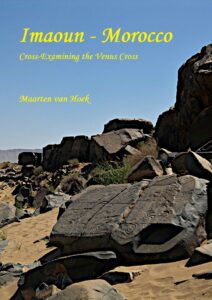
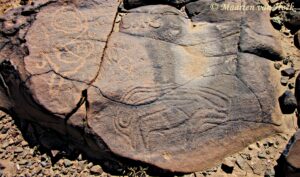

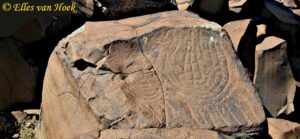
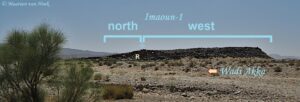

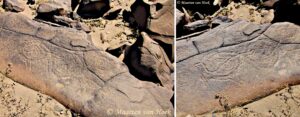
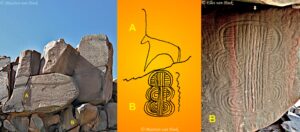
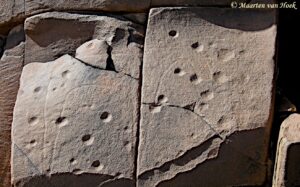
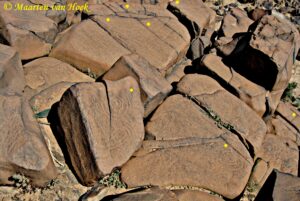
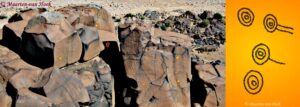


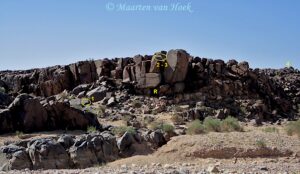
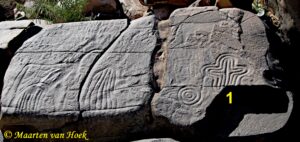
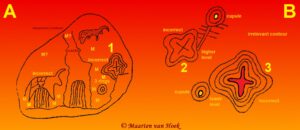
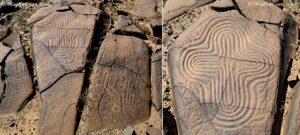
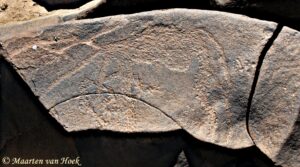
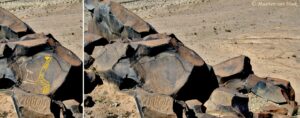
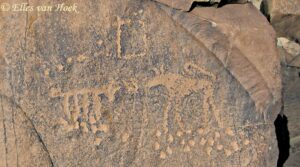
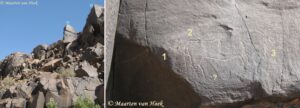



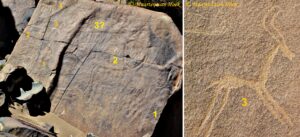

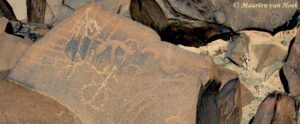
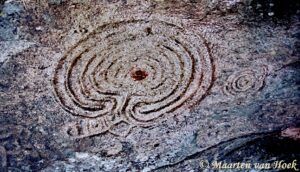
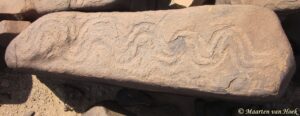
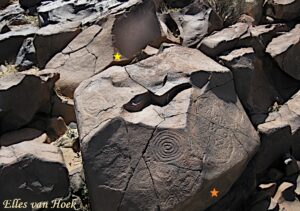

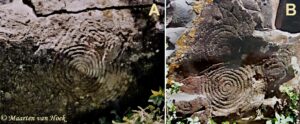
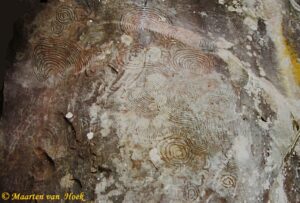

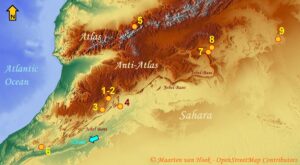

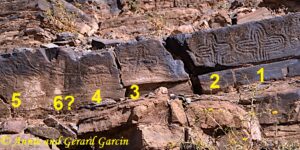


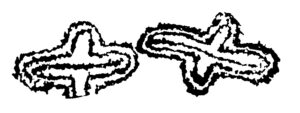














Leave a Reply